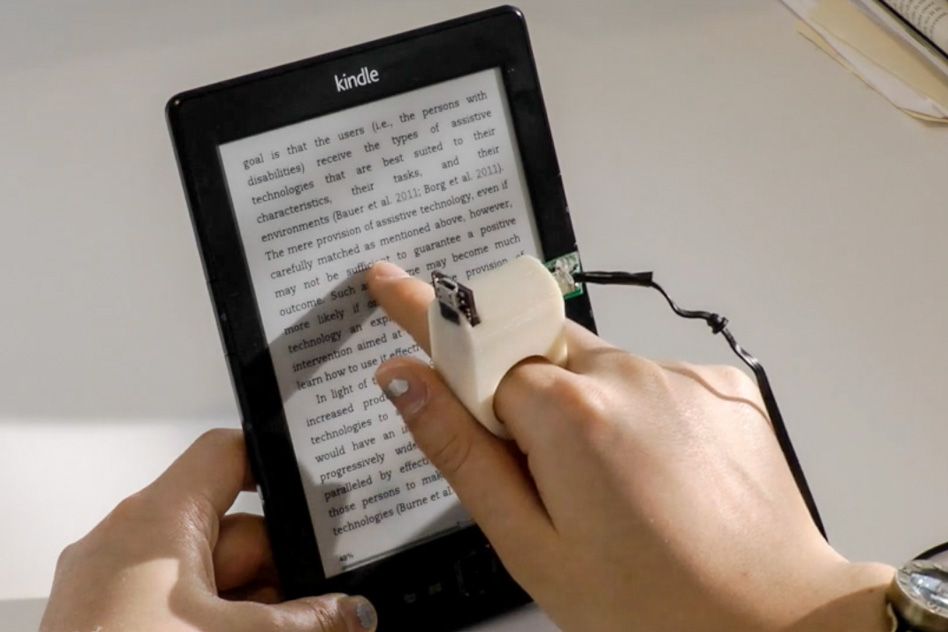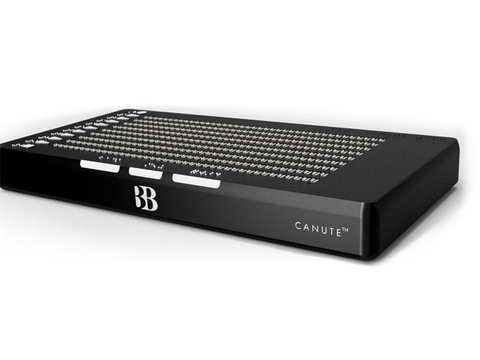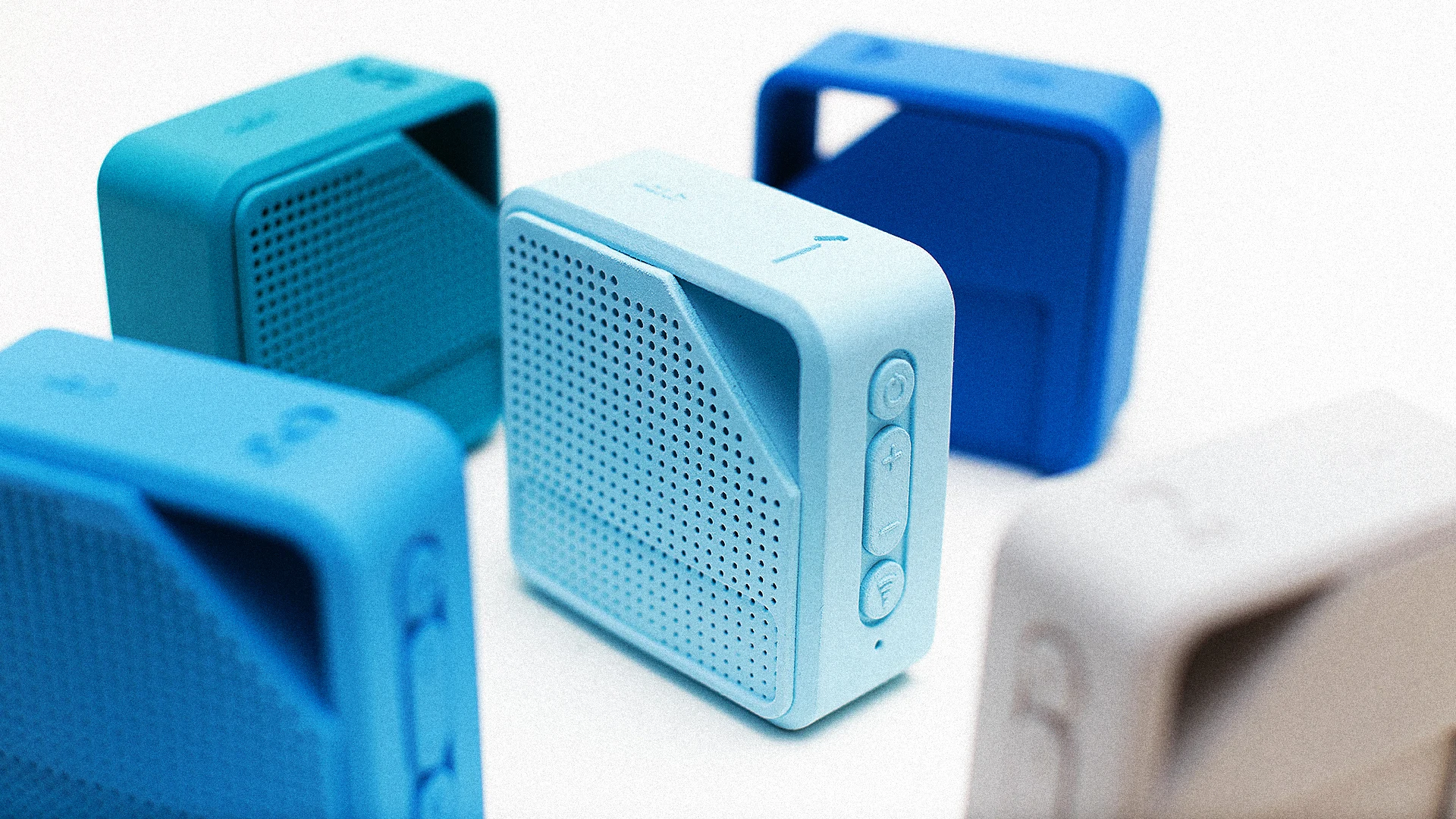Discover Cutting-edge Tools Designed for the Visually Damaged
The growth of innovative devices for the aesthetically impaired stands for a significant innovation in access and freedom. Technologies such as wise glasses with AI capabilities and mobile applications created to offer acoustic descriptions are reshaping daily experiences for individuals. Furthermore, wearable gadgets that use haptic comments improve ecological awareness, while modern-day Braille developments supply new methods to involve with message. As these devices proceed to advance, their effect on the lives of those with visual problems raises crucial questions about the future of inclusivity and autonomy in various facets of life. What exists ahead in this technical landscape?
Smart Glasses for Navigation

Smart glasses designed for navigation are transforming the method visually damaged people engage with their environment. These innovative devices use a combination of camera technology, expert system, and acoustic feedback to supply real-time information about surroundings. By using challenge detection systems, wise glasses can notify customers to potential risks, enabling much safer movement in both acquainted and strange setups.
The combination of GPS modern technology further enhances navigating capabilities, permitting individuals to receive acoustic instructions as they move. This hands-free approach not just promotes independence yet also empowers aesthetically damaged individuals to browse metropolitan landscapes with boosted confidence. Additionally, numerous clever glasses are geared up with functions that identify landmarks and road indicators, giving contextual information that improves the customer experience.
Additionally, the growth of these tools is consistently progressing, with firms working to boost the accuracy of things acknowledgment and expand the variety of navigational features. As smart glasses come to be a lot more available and budget friendly, they hold the potential to dramatically transform life for aesthetically damaged customers. Eventually, these ingenious devices represent a vital action towards inclusivity, offering boosted wheelchair and a greater feeling of autonomy for people browsing the globe around them.

Mobile Apps for Daily Living
Just how can mobile applications enhance the lives of visually damaged individuals? Mobile apps are reinventing the method visually impaired users browse their environments, manage day-to-day jobs, and gain access to information. These applications offer crucial support via numerous capabilities, fostering freedom and enhancing quality of life.
A number of ingenious mobile applications are created specifically for everyday living. For instance, apps like Be My Eyes attach visually impaired individuals with sighted volunteers by means of video telephone calls, enabling them to receive real-time help with jobs such as reading tags or browsing strange rooms. Seeing AI, created by Microsoft, utilizes synthetic intelligence to define surroundings, checked out text, and identify objects, properly transforming a mobile phone right into a powerful device for everyday help.
In addition, navigating apps customized for the visually damaged, such as Aira and BlindSquare, supply audio-based directions and ecological details, making it possible for individuals to traverse their surroundings securely and with confidence. Past navigating and immediate help, mobile applications also support company and task monitoring, with features that assist customers establish pointers, produce to-do lists, and track appointments. In recap, mobile applications function as crucial resources, encouraging aesthetically damaged individuals to lead more independent and meeting lives.
Wearable Technologies for Help
Empowerment with modern technology is significantly evident in the world of wearable tools made to aid visually impaired people. These innovative tools incorporate perfectly right into every day life, boosting navigating and providing crucial comments to individuals. For instance, smart glasses geared up with cameras can identify faces and check out message aloud, enabling customers to engage more confidently in social and expert settings.
An additional noteworthy innovation is using haptic comments systems in wearable gadgets. These systems utilize vibrations or various other responsive signals to convey information concerning the customer's atmosphere, such as obstacles or changes in surface, enhancing movement and safety. Wearable technologies also include wristbands that link to smart devices, signaling individuals to alerts through subtle resonances, therefore improving connectivity without dependence on aesthetic signs.
As these technologies continue to progress, they are not just boosting independence for aesthetically damaged individuals but also cultivating a higher feeling of incorporation in culture. By linking the gap between difficulties dealt with in everyday living and the potential for autonomy, wearable innovations offer as critical devices in the quest for equality and empowerment for those with aesthetic disabilities.
Audio Summary Devices
Audio summary tools play a crucial role in improving availability for aesthetically impaired individuals, offering them with the capability to involve with visual media. Smart glasses for the visually impaired. These tools offer narrated descriptions of essential visual aspects in films, television programs, and live efficiencies, making certain that users can completely comprehend the context and feelings conveyed via visuals
Sound description can be incorporated right into numerous systems, including streaming solutions, movie theater testings, and live theater. Several preferred streaming solutions currently include audio description as an access feature, permitting viewers to pick it conveniently. Along with traditional media, his explanation specialized applications also exist, offering audio summaries for art exhibitions, galleries, and other cultural events.
The effectiveness of audio description pivots on the ability of the narrators, who must communicate visual information succinctly without taking away from the original audio. Innovations in this field are likewise leading the way for even more individualized experiences, where users can adjust the level of detail and pacing according to their choices.
Braille Innovations and Tools
Braille tools and advancements have actually dramatically transformed the way visually damaged people connect with message and info. Modern improvements have caused the growth of flexible tools that enhance proficiency and freedom among customers. Significantly, Braille display technologies have actually evolved, enabling for dynamic reading experiences. These gadgets transform digital text into Braille, making it possible for customers to access a huge variety of info on mobile phones, computers, and tablets.
Moreover, portable Braille notetakers integrate conventional Braille input with modern-day performances, helping with note-taking, organizing, and record modifying on the go. Smart glasses for the visually impaired. These portable gadgets usually include text-to-speech abilities, bridging the gap in between Braille and acoustic information
In enhancement, ingenious Braille printers have actually arised, permitting customers to create Braille tags, papers, and academic materials efficiently. This accessibility cultivates higher involvement in professional and educational environments, eventually promoting inclusivity.
In addition, research into clever Braille modern technologies proceeds to increase. Instruments that incorporate synthetic knowledge are being explored to offer real-time navigation aid and contextual information, improving the user experience in diverse settings. On the whole, these developments show a dedication to empowering aesthetically impaired individuals with modern technology, guaranteeing they can quickly access and involve with the globe around them.

Conclusion
The innovation of ingenious Homepage devices for the visually impaired considerably enhances freedom and quality of life. Smart glasses, mobile applications, wearable technologies, audio summary devices, and Braille innovations collectively equip individuals by providing vital navigating help, environmental understanding, and improved analysis experiences. These technologies not only foster better incorporation however likewise promote freedom in day-to-day activities, eventually adding to an extra accessible and fair society for visually damaged people. Proceeded growth in this area holds promise for more improvements.
As smart glasses become much more affordable and easily accessible, they hold the possible to significantly change daily life for aesthetically damaged users. Mobile applications are transforming the way visually impaired customers browse their atmospheres, manage day-to-day tasks, and access details. Applications like Be My Your Domain Name Eyes link visually damaged individuals with sighted volunteers via video clip telephone calls, permitting them to get real-time help with tasks such as reading tags or browsing unfamiliar rooms.Furthermore, navigation apps tailored for the visually damaged, such as Aira and BlindSquare, supply audio-based instructions and environmental information, enabling individuals to traverse their environments safely and with confidence.The development of ingenious tools for the visually damaged dramatically improves freedom and quality of life.